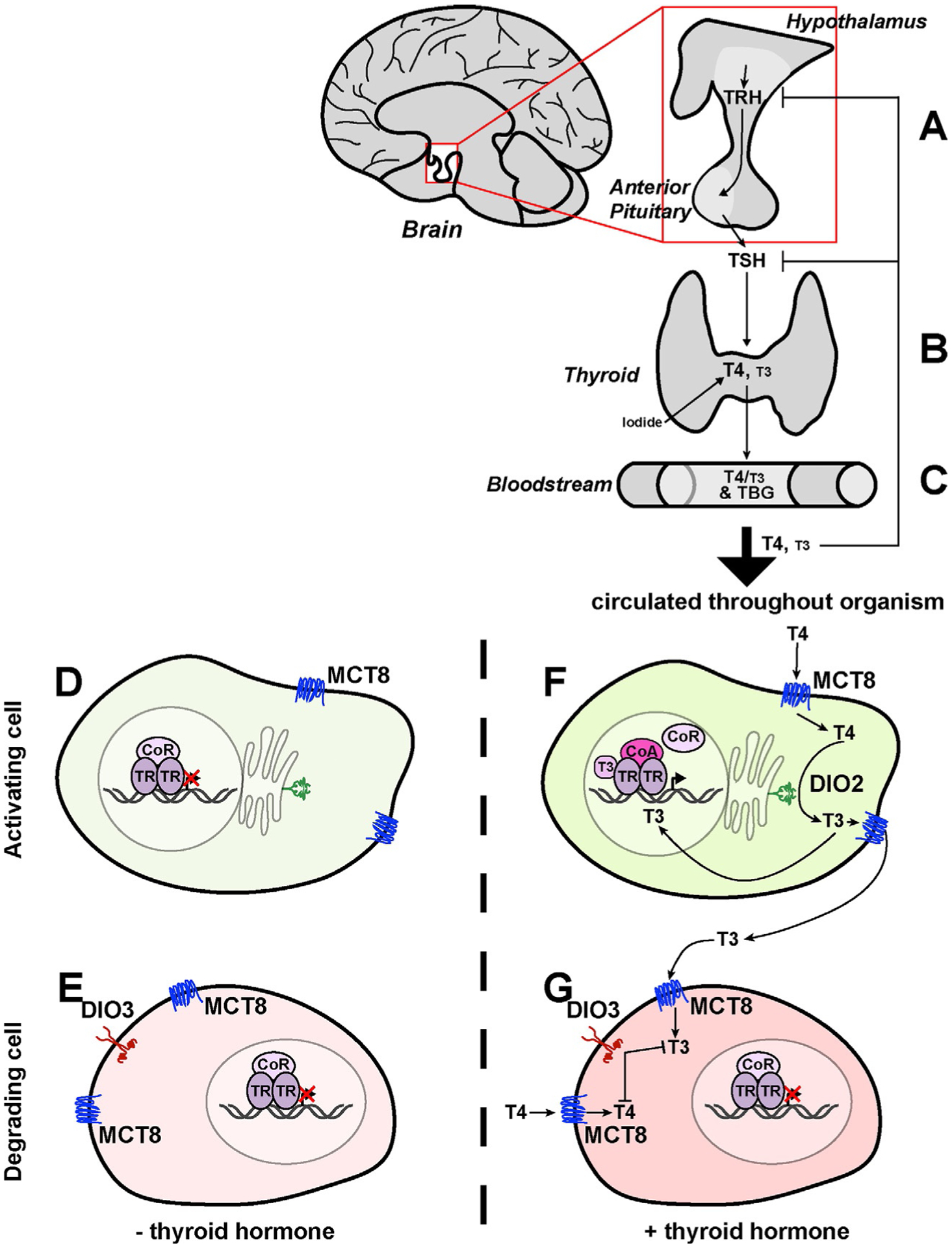Fig. 1.

Thyroid hormone synthesis, release, circulation, and local regulation/action. (A) Activation of the hypothalamus releases TRH, which promotes release of TSH from the anterior pituitary. (B) TSH stimulates the thyroid to produce thyroid hormone (T4 and T3), which is stored or released. (C) Thyroid hormones are carried through the bloodstream by TBG. (D and E) In the absence of thyroid hormone, thyroid hormone receptors (TR) bind to TREs as dimers (here, represented as a homodimer), which can also bind to a corepressor (CoR). (F and G) In the presence of thyroid hormone, T4 and T3 enter cells through membrane transporters (here, represented by MCT8). Internally, thyroid hormone can either be activated (F) or degraded (G). (F) DIO2 can convert T4 into T3, which can be released from the cell or brought to the nucleus. T3 binding TR in the nucleus promotes CoR release and coactivator (CoA) binding to promote transcription of response genes. (G) If DIO3 is present, it degrades both T4 and T3. CoR remains bound to TR, inhibiting transcription of response genes.
